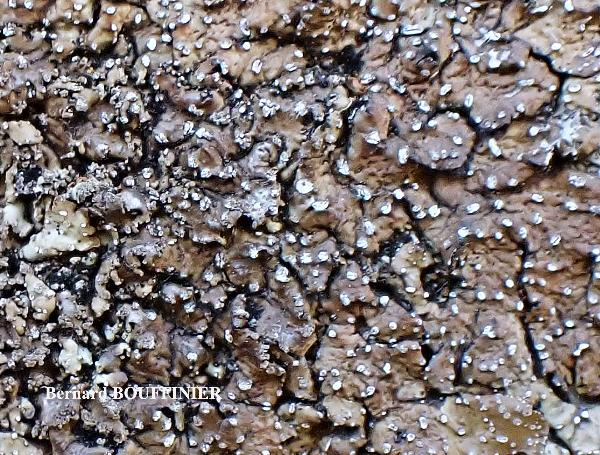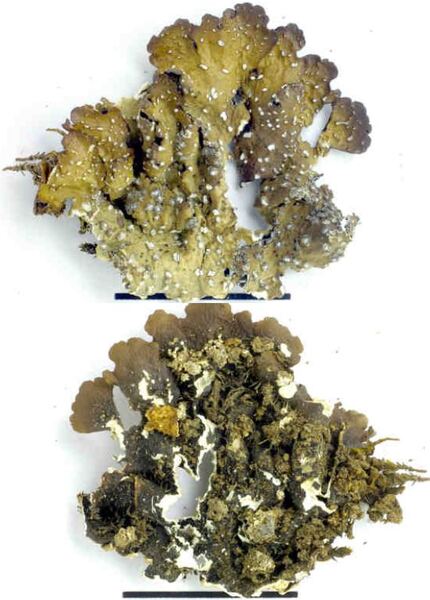Punctelia stictica (Duby) Krog
Nord. J. Bot., 2: 291, 1982. Basionym: Parmelia borreri var. stictica Duby - Bot. Gall., 2: 601, 1830.
Synonyms: Parmelia dubia var. stictica (Duby) Schaer.; Parmelia stictica (Duby) Nyl.
Distribution: N - TAA, Lomb.
Description: Thallus foliose, heteromerous, dorsiventral, forming regular to irregular, up to 5 cm wide rosettes, sorediate. Lobes contiguous, flat, (2-)2-6 mm wide, with rounded apices, eciliate, the upper surface greenish grey, becoming brown at margins, sometimes entirely brown in sun-forms, with punctiform to usually irregular, white pseudocyphellae, and marginal and laminal, circular to irregular, up to 0.4 mm wide soralia originating from pseudocyphellae, bearing granular-isidioid soredia. Lower surface black in central parts, brown near margins, with simple, black to pale, often clustered rhizines. Upper and lower cortex paraplectenchymatous: medulla white. Apothecia extremely rare, lecanorine (not observed in Italian material). Pycnidia black, laminal. Conidia filiform, 9-14 x c. 1 µm. Photobiont chlorococcoid. Spot tests: upper cortex K+ yellow, C-, KC-, P-or P+ very faintly yellow; medulla K-, C+ pink, KC+ pink, P-. Chemistry: upper cortex with atranorin; medulla with gyrophoric acid.Note: on siliceous rocks in open situations; probably more widespread in the Alps.
Growth form: Foliose, broad lobed
Substrata: rocks
Photobiont: green algae other than Trentepohlia
Reproductive strategy: mainly asexual, by soredia, or soredia-like structures (e.g. blastidia)
Most common in areas with a humid-warm climate (e.g. most of Tyrrenian Italy)
Commonnes-rarity: (info)
Alpine belt: absent
Subalpine belt: absent
Oromediterranean belt: absent
Montane belt: very rare
Submediterranean belt: extremely rare
Padanian area: absent
Humid submediterranean belt: absent
Humid mediterranean belt: absent
Dry mediterranean belt: absent

Predictive model
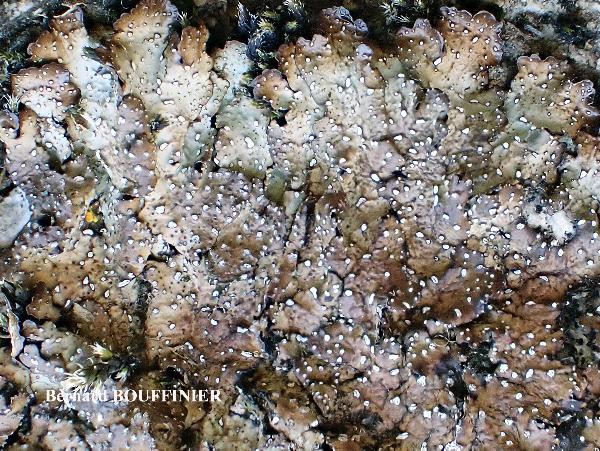
Bernard Bouffinier - Source: http://www.lichensmaritimes.org/index.php?task=fiche&lichen=1322&lang=en
France, Lac d'Estaing, Pyrenees

Bernard Bouffinier - Source: http://www.lichensmaritimes.org/index.php?task=fiche&lichen=1322&lang=en
France, Lac d'Estaing, Pyrenees
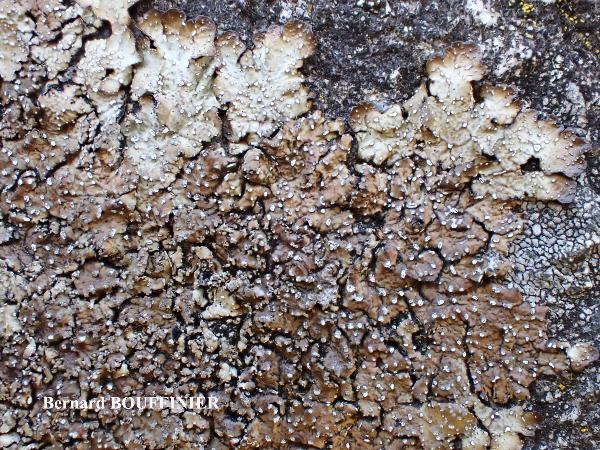
Bernard Bouffinier - Source: http://www.lichensmaritimes.org/index.php?task=fiche&lichen=1322&lang=en
France, Lac d'Estaing, Pyrenees
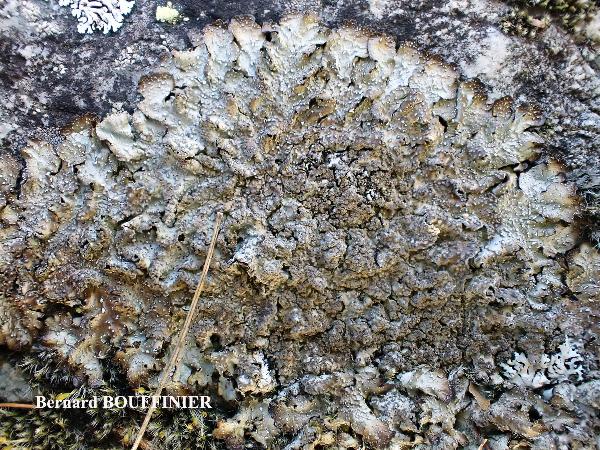
Bernard Bouffinier - Source: http://www.lichensmaritimes.org/index.php?task=fiche&lichen=1322&lang=en
France, Lac d'Estaing, Pyrenees
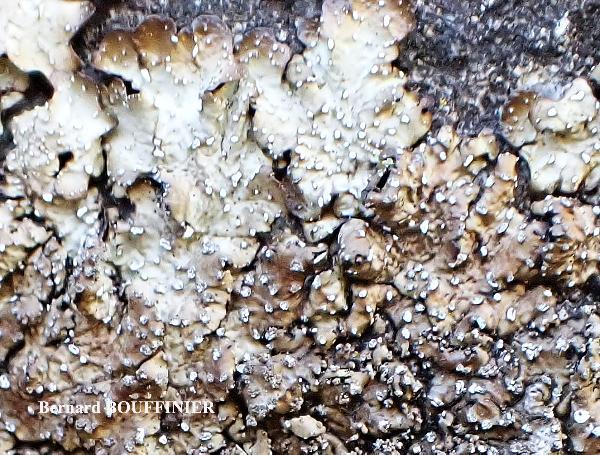
Bernard Bouffinier - Source: http://www.lichensmaritimes.org/index.php?task=fiche&lichen=1322&lang=en
France, Lac d'Estaing, Pyrenees
Growth form: Foliose, broad lobed
Substrata: rocks
Photobiont: green algae other than Trentepohlia
Reproductive strategy: mainly asexual, by soredia, or soredia-like structures (e.g. blastidia)
Most common in areas with a humid-warm climate (e.g. most of Tyrrenian Italy)
Commonnes-rarity: (info)
Alpine belt: absent
Subalpine belt: absent
Oromediterranean belt: absent
Montane belt: very rare
Submediterranean belt: extremely rare
Padanian area: absent
Humid submediterranean belt: absent
Humid mediterranean belt: absent
Dry mediterranean belt: absent

Predictive model

Bernard Bouffinier - Source: http://www.lichensmaritimes.org/index.php?task=fiche&lichen=1322&lang=en
France, Lac d'Estaing, Pyrenees

Bernard Bouffinier - Source: http://www.lichensmaritimes.org/index.php?task=fiche&lichen=1322&lang=en
France, Lac d'Estaing, Pyrenees

Bernard Bouffinier - Source: http://www.lichensmaritimes.org/index.php?task=fiche&lichen=1322&lang=en
France, Lac d'Estaing, Pyrenees

Bernard Bouffinier - Source: http://www.lichensmaritimes.org/index.php?task=fiche&lichen=1322&lang=en
France, Lac d'Estaing, Pyrenees

 INDEX FUNGORUM
INDEX FUNGORUM
 GBIF
GBIF
 DOLICHENS
DOLICHENS
